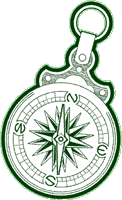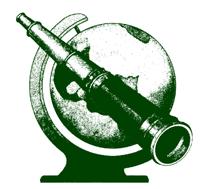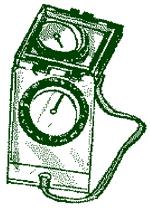 Subject Areas Subject Areas
Social Studies, Science, Language Arts, Art
Duration
Three to five class periods (depending on activity choices and detail applied)
Setting
Classroom and field work within the designated community
Skills
Map reading and creating, interpreting, synthesizing, identifying, classifying, describing, documenting, applying, demonstrating, illustrating
Charting the Course
The activities described here are a good starting point to having students understand their community’s place within the bigger picture of the Down Jersey region. Items from the film could easily be incorporated into students’ maps. In order to “celebrate” their sense of place, students must first understand their place.
Vocabulary
Map, scale, symbol, comunity, neighborhood (others as determined by focus of activity)
Correlation to NJ Core Curriculum Content Standards
Social Studies - 6.6 (3,4,5), 6.7 (1,2,5,7,8,9,10), 6.8 (2,3,5), 6.9 (1,2,3,5)
Science - 5.5 (3), 5.7 (1), 5.10 (1), 5.12 (1,2,4,5,6,9)
Art - 1.3 (2), 1.6 (1,2,3,4)
Language Arts - 3.1 (7,8,12), 3.2 (3,6), 3.5 (1,2,3,4,7, 10) |
Objectives
Students will:
- Create a community map and incorporate concepts of symbols, scale and dimension.
- Incorporate into the map special features and resources found within their community.
Materials
3' x 3' map of the local area showing streets and buildings (may be available through city hall, tourist office, library, planning department, etc.)
81/2" x 11" field maps for each pair of students, reduced and photocopied from large map
Colored markers and flip chart paper
Making Connections
Much of the content presented in the film Down Jersey is centered on the unique features of the place — that is, the southern New Jersey/Delaware Bayshore. The area included in the film is large, encompassing the three counties: Salem, Cumberland and Cape May. In order for students to understand their place within the larger context of the region, a community sense of place should be initiated and fostered. This activity is an appropriate starting point to teaching students about their own community and the features (both natural and manmade) that make it unique and special.
Background
By Jane McRae, Author of Community Mapping: Creating a Sense of Place
 If you were going to map your community, what would you include? If you were going to map your community, what would you include?
Streets and intersections? Footpaths and bicycle routes? Houses, schools and businesses? Birds’ nests and dog houses? Parks and geographic features? Trees and other living organisms? Your friends and neighbors?
There are many ways of seeing a community, and mapping is a means of experiencing and expressing its features in a way that deeply engages the map maker. Used in education programs, it is a tool of discovery that helps students build connections to their home places and promotes an ethic of caring for the community that is rooted in a knowledge of local ecology and history. Besides its many possible curriculum links, the mapping of special places and things in students’ daily lives gives validity to personal experiences outside the classroom. It also captures students’ imaginations by giving them opportunities to share ideas about quality of life and develop a vision of what an ideal community would be like.
Mapping local communities also captured my imagination as an environmental educator working primarily with English-as-a-second-language (ESL) students. Just as the urban dweller increasingly feels a sense of isolation from the physical landscape, newcomers are faced with the formidable task of navigating a foreign landscape. Getting to know the community by drawing maps and learning about past and present inhabitants seemed an ideal methodology for introducing local content into the ESL (and other) classroom. Furthermore, mapping objectives and activities are easily adapted to different ages and backgrounds.
The mapping project presented here consists of four classroom sessions, each approximately two hours in length. The goal is to welcome and facilitate participation by the students in community issues they are concerned about. The outline that follows describes the initial activities used with various groups. The features of the local area and the interests and concerns of the group (class) subsequently drive the choice of content and activities within this framework. A list of options is provided as a toolbox of ideas, although once you begin your own mapping adventure with your class, the ideas will spring forth. The key is to clarify your mapping objectives before you begin.
NOTE: There are many sources of community information available that could enhance and/or direct this activity to focus on a specific community characteristic, historical settlement information, significant architectural styles and remnants, etc. Both the entire film Down Jersey as well as the Historic Themes and Resources book contain tremendous background information that could be applied to this activity.
Procedure
Warm Up
The basic tools of community mapping are introduced, in this case, to the ESL audience, through language acquisition exercises. To begin, present definitions of key words like map, community and neighborhood with the aid of visuals (maps, the film Down Jersey, etc.) and dictionaries. A readily available city transit or tourist map can be used to assess students’ familiarity with the general area. Have students work in groups to answer questions such as: Where is the school located? What street divides the area between east and west? North and south? Where are the parks? And other general orienting questions.
The Activity –– First Session:
Part One
Begin the process of identifying what contributes to an individual’s sense of community. Guide the students through an activity in which they draw their own neighborhood. Their house or apartment is drawn in the center of a piece of paper, and relative to it are placed either drawings or symbols to denote the nearest tree(s), school, grocery store, bus stop, park, and something they like and dislike about their neighborhood. Have students discuss (in partners or as a group) their most and least favorite things about their home communities. This discussion points out commonalities among individuals’ likes and dislikes, and may be extended to what they like and dislike about their communities and/or their home towns or countries.
 Part Two Part Two
The next activity begins with an introduction of the concept of “quality of life.” Encourage students to think beyond basic needs such as a place to live and work and play, to what makes them feel good about living in their community and what they consider to be elements of “quality of life.” Distribute colored markers and flip chart paper to groups of five or six students. Ask them to draw their version of an ideal community, incorporating and building on the elements that they have identified up to this point. Allow at least a half hour for this, as it often takes ten minutes (and encouragement from the teacher) before all students are drawing. Debrief by generating a flip chart list of the important quality-of-life indicators (QLIs) from each group’s drawings.
Once a list of 20 or so QLIs has been generated, review each one to ensure that students understand its meaning and ask them to give a tangible example of each. Write each QLI on a separate piece of scrap paper and place them up around the classroom. Distribute sticky dots and ask each student to place them on the three elements they think are most important for a high quality of life in their community. Select the top 10-12 (depending on the number of students) and assign a pair of students to each QLI. This is the element in the community that each pair will be locating and mapping as a homework assignment.
Give a field map to each pair and illustrate the boundaries of the community or area that they will be expected to map (the field map can be a reduced photocopy from the large map, or, if readily available, obtain copies for the entire class). Make sure the students understand what and how they are going to represent the QLIs on their maps. For instance, if green spaces or parks are the QLI, students could include private gardens or tree-lined streets. The purpose of the field activity is to determine if the community in the proximity of their school has a high quality of life according to the indicators they have selected.
Lists of QLIs have included: good public transportation; parks and green spaces; clean air; clean water; friendly neighbors; places to meet people; safe to walk at night; beautiful surroundings; schools close by; easy commute to work; place where people help one another; community services such as medical and police; and shops close by. We point out to students that their lists share many elements in common with poll results obtained from people across the country.
Part Three
At this point have the students generate three columns of information (on flip chart paper, so that it can be added to later) under the following headings: Know, Wonder and Learn. The “Know” column lists features of the community about to be mapped that they already know. The “Wonder” column is for additional questions they have about the community, and the “Learn” column will be a compilation of what they learn through the mapping project. For instance, if students responsible for mapping the location of police services already know where the local police station is, they might be encouraged to look for signs of other security programs in the area such as Blockwatch, or other similar local programs.
Activity 2: Second Classroom Session
Part One
The next step is to transfer the information from the field maps onto the large, classroom map. We use symbols collected from books such as the Symbol Source Book (see Resources) and from magazines. While some students are working on the large map, others can be adding information to the appropriate columns of the Know, Wonder, Learn chart.
Have students discuss some of the issues or problems they noticed in the community that detract from the quality of life according to their indicators. Working in small groups, have them pick an issue and brainstorm things that an individual could do to address the problem in that community. Afterwards, have each group share their ideas with the class. A contact/action assignment (see Extensions) could involve having students interview people who live in the community about their views on one or more of the selected issues.
Part Two
Up to this point, the focus has been primarily on human communities. Ask students what other living things they observed, or would expect to find in their community (add to the Know, Wonder, Learn, chart), and discuss why diversity is important. Using a field guide for the local area, introduce the names of flora and fauna. Time and weather permitting, conduct another foray (or assign as homework) into the community to locate and map signs of other living creatures (wildlife). These are added to the big map during the next class period. One student brought in photographs of raccoons raiding his garbage at night, which we pasted around the border of the map, with an arrow drawn to his house.
Wrap Up
What makes community mapping so potent is that it is very personal. It highlights the link between students and their physical surroundings and helps them make sense of their world. Its basic premise is that the better we know our communities and sense our connection to them, the more willing we are to act to ensure that they are socially and environmentally healthy places to live.
Action
Please see the extensions and optional activities offered. Students may become more involved with completing their Know, Wonder and Learn charts and therefore become more active participants in their communities.
Assessment
Student participation in the mapping assignments, activities and discussions outlined in this activity.
Extensions
There are endless numbers of routes to take from this juncture. The following suggestions have worked well with our students and may be personalized to build on students’ concerns and interests. Some of the themes we have designed activities around include heritage buildings, the importance of trees, air and water quality, and waste reduction.
- Conduct a walkabout in the neighborhood led by a community worker who can talk to the students about issues of concern and how community members have organized groups or services to address them. We have worked with representatives from a local business improvement society, a volunteer police station, a volunteer recruitment agency, a community compost garden and a city planning department.
 A contact assignment: Have students interview three people (perhaps a youth, working adult and retired adult) from the neighborhood about their perspective on a particular community issue. Have a debate in class once students have heard the different perspectives within the community. This assignment could also focus on a particular subject, such as history, by having students interview someone who has knowledge of the community’s past. Old photos could be obtained from libraries and archives to build a display. A contact assignment: Have students interview three people (perhaps a youth, working adult and retired adult) from the neighborhood about their perspective on a particular community issue. Have a debate in class once students have heard the different perspectives within the community. This assignment could also focus on a particular subject, such as history, by having students interview someone who has knowledge of the community’s past. Old photos could be obtained from libraries and archives to build a display.
- Gather photos of various sites within the community and have students try to identify them. Add them to the display or large map with arrows drawn to the photos.
- Have students do a community or school project such as setting up shared composting bins.
- One group wrote short essays about heritage buildings and pasted them on the map borders. The map was donated to the public library for a public event that was profiling community projects.
- Introduce students to the services of volunteer agencies (or groups and organizations) and the benefits of volunteering (i.e., meet new people, practice language skills, do something about an issue of concern, get practical experience, etc.).
- Design a city block or neighborhood: In groups, have students design and draw (or make a model), incorporating the ideas and solutions they have discussed.
- Art project: Have students each sketch, draw or photograph a favorite tree, scene, river, etc. and add it to the map display.
- Design questions and answers from material covered during the mapping activities and have students play a game of trivial pursuit. For example: “Name two tree species found in this community.”
- Administer a pre- and post-test survey to evaluate changes in students’ knowledge and perceptions of their community and their potential role in it.
- Wrap up and celebrate with a map display.
Project Summary
- Decide on mapping project objectives (e.g. a way to study the natural sciences, social studies, and learn English).
- Identify themes around which to focus excursions (e.g. other species, natural areas, green spaces, etc.)
- Draw upon resources in the community (e.g. guest speakers, contact assignments).
- Record growth of community knowledge (Know, Wonder, Learn chart).
- Create opportunities for community participation (contact assignments, brainstorms, class projects).
- Celebrate results (display maps in the school library, plant a native tree in the schoolyard, etc.).
Please download the PDF for the complete lesson plan.
| Resources
Symbol and Source Book. Dreyfuss, H., 1984. New York: Van-Nostrand-Reinhold.
Giving the Land a Voice: Mapping Our Home Places. Harrington, Sheila. Saltspring Island Community Services Society, 268 Fulford-Ganges Road, Salt Spring Island, BC V8K2K6, (250)537-9971. $16 includes s&h. A practical manual that provides an extensive list of resources.
Sense of Place and Education. Sanger, M., 1997. Journal of Environmental Education 29:4-8. A brief rationale for community education programs.
Coming Home: What Childhood Maps Reveal About the Experience of Place. Smith, Gregory. 1997. Clearing 96 (Jan.-Feb. 1997), 7-10. A classroom exercise that reveals connections to place developed in childhood. Clearing, 19600 S. Molalla Ave., Oregon City, OR 97045, (503) 656-0155.
Afton Publishing Company, P.O. Box 1399, Andover, N.J. 07821-1399. (973) 579-2442, fax (973) 579-2842. Has an extensive list of New Jersey-specific materials available for Elementary Grades. Call for catalog. Also has a newsletter called “The Aftoneer” that is published spring and fall for persons teaching “New Jersey” in the elementary grades.
Charting a Course for the Delaware Bay Watershed. Honigfield, Harriet, New Jersey Conservation Foundation, 1997. Bamboo Brook, 170 Longview Road, Far Hills, NJ 07931-2623. (732) 234-1225 |
|


 Subject Areas
Subject Areas  If you were going to map your community, what would you include?
If you were going to map your community, what would you include?  Part Two
Part Two A contact assignment: Have students interview three people (perhaps a youth, working adult and retired adult) from the neighborhood about their perspective on a particular community issue. Have a debate in class once students have heard the different perspectives within the community. This assignment could also focus on a particular subject, such as history, by having students interview someone who has knowledge of the community’s past. Old photos could be obtained from libraries and archives to build a display.
A contact assignment: Have students interview three people (perhaps a youth, working adult and retired adult) from the neighborhood about their perspective on a particular community issue. Have a debate in class once students have heard the different perspectives within the community. This assignment could also focus on a particular subject, such as history, by having students interview someone who has knowledge of the community’s past. Old photos could be obtained from libraries and archives to build a display.